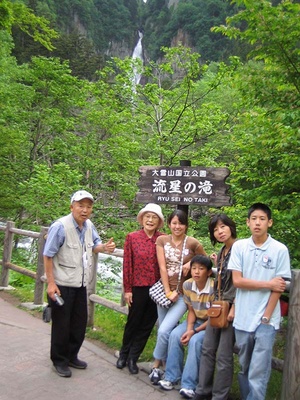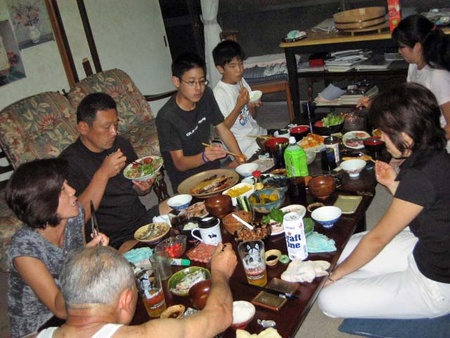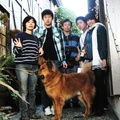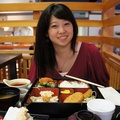Food is such an essential part of life, not just because it provides us with the nutrients and calories needed to survive, but because often times, eating is an act of socializing. My mother always said, “To be able to enjoy food is such a blessing. The day when I can’t taste anymore will be a very sad day.” When I heard that my grandmother in Japan does not cook anymore because she cannot get any of the flavorings right and thus lost her joy for cooking for her husband, my mother’s words flooded through me. This Discover Nikkei entry is dedicated to my grandmother, who always invited my brothers and I back to Japan with the best of her cooking.
For as far back as I can remember, whenever my family took trips back to Chiba, Japan, my grandparents’ welcome-home dinner was always the fanciest with tables and tables of sashimi, egg, cucumber, unagi, nori, gohan, and miso shiru for all of our cousins, uncles and aunts, and ourselves. They always greeted us with a family temaki-zushi party.
The preparation itself took a family effort. We would drag out all of the small Japanese tables with short legs out of the dark and dusty closets and line them up in their living room, which resulted in line of tables, some larger and wider than others, but always just enough room for everyone to sit around it. We’d then pull out the zabuton cushions and arrange them neatly on their floor in preparation for the feast. Having grown up in America, I recall having difficulty sitting on these cushions without crossing my legs, which is still a no-no in Japan for the ladies.
When the food was brought out, it was like a big puzzle placing all of the different variety of fish and other ingredients evenly spread out across the multiple tables. It did not make it any easier that many of the plates that the fish rested on were hand-made by my grandparents and thus sometimes disfigured or lopsided. Nonetheless, we always managed to fit everything and then it was time to eat. “Itadakimasu!”
Temaki is one food that involves work before you get to the actual eating of it. You must first place a piece of nori onto the palm of your hand and then scoop just the right amount of rice onto the nori. Then you flatten the rice without squishing down the grain. Next, you choose your ingredients—as much as will fit into your roll without it falling out. It’s always a challenge to figure out the right amount of sashimi, especially when you get greedy and want to include everything! Finally, you dip your crafted roll into shoyu and wasabi and enjoy!
The adults would go on drinking their fancy sake and shochu while the children drank mugicha and Calpis to wash down the spiciness of the wasabi. It was always such a merry time, catching up with relatives and eating till we felt like we were going to explode.
I always felt this was one of the highlights of my trip back to Japan. It was heartbreaking the year when we no longer did these parties because it was too much work for my grandparents who were growing old. However, I think it was around this time that I started to hold my own temaki parties. By the time I got to college, I had friends come over to my apartment and shared this food culture with Japanese and non-Japanese people.
What was once my family’s welcome-home party is now a part of my life that I can share with people around me in the U.S. Maybe when I am a little older and have a family of my own, I’ll continue the legacy and host temaki parties for my children. After all, what’s better way to expose them to Japanese culture than hand-rolled sushi?
© 2012 Eri Kameyama








